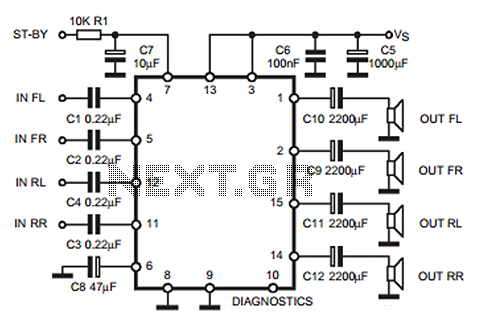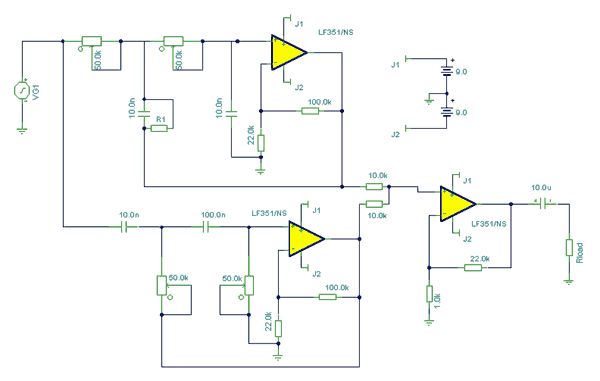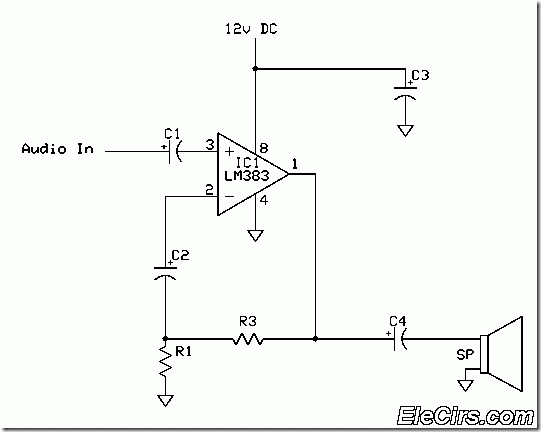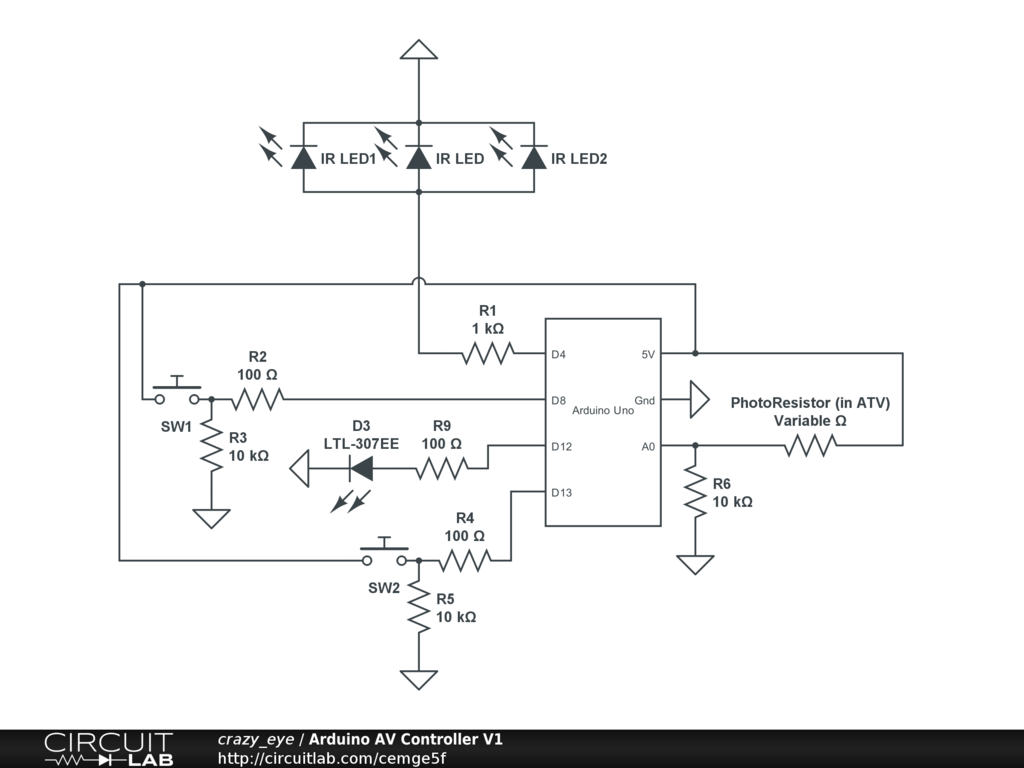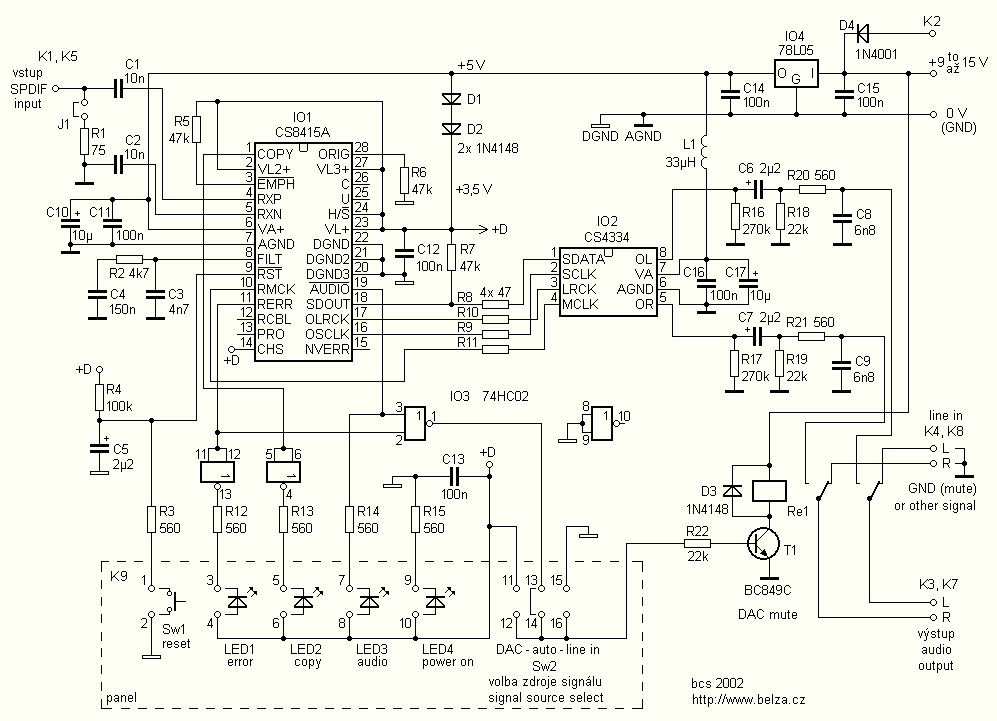
Modular Music Box Arduino polyphonic audio
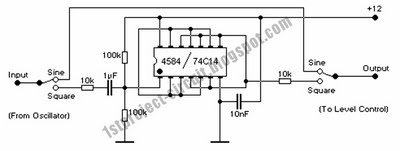
Prior to emailing Pablo Gian Villamil, he provided a link to his class notes on generating polyphonic sound with Arduino. Efforts were made to understand his circuitry through various blog posts and component listings, including the CMOS Hex Schmitt Trigger Inverter Integrated Circuit (74C14) and the CMOS Quad NAND Gate Schmitt Trigger Integrated Circuit (CD4093). Additionally, the CD4093B Quad 2-input Schmitt trigger NAND gate was present on the board but not utilized.
The circuit described involves the use of Schmitt trigger devices, which are crucial in generating stable digital signals from noisy inputs. The 74C14 is a hex inverter featuring Schmitt trigger action, making it suitable for applications requiring signal conditioning and waveform shaping. It can convert slow or noisy signals into clean, fast square waves, which is essential for generating polyphonic sound.
The CD4093 is a quad 2-input NAND gate with Schmitt trigger characteristics, allowing it to handle multiple input signals effectively. This device can be configured to create oscillators or pulse-width modulation circuits, which are integral in synthesizing musical tones. The presence of the CD4093B on the board, although not in use, suggests potential for expansion or modification of the circuit to include additional functionalities.
In a typical application for generating polyphonic sound, these components can be interconnected to form oscillators that produce different frequencies corresponding to musical notes. The output of these oscillators can be mixed and shaped using additional circuitry, such as filters and amplifiers, to create a rich sound palette. The design may also incorporate microcontroller interfacing, allowing for real-time control of parameters like pitch and modulation, thus enhancing the polyphonic capabilities.
Overall, the combination of the 74C14 and CD4093 provides a robust foundation for building a versatile sound generation system using Arduino, facilitating the exploration of complex audio synthesis techniques.Before I emailed Pablo Gian Villamil and he sent me on a link to his class notes (yay!) for Generating polyphonic sound with Arduino I tried to work out his circuitry from his various blog posts and component listings CMOS Hex Schmitt Trigger Inverter Integrated Circuit (74C14) or CMOS Quad NAND Gate Schmitt Trigger Integrated Circuit (CD4093) (on the board but not using it 4093 4093B Quad 2-input Schmitt trigger NAND gate ) 🔗 External reference
The circuit described involves the use of Schmitt trigger devices, which are crucial in generating stable digital signals from noisy inputs. The 74C14 is a hex inverter featuring Schmitt trigger action, making it suitable for applications requiring signal conditioning and waveform shaping. It can convert slow or noisy signals into clean, fast square waves, which is essential for generating polyphonic sound.
The CD4093 is a quad 2-input NAND gate with Schmitt trigger characteristics, allowing it to handle multiple input signals effectively. This device can be configured to create oscillators or pulse-width modulation circuits, which are integral in synthesizing musical tones. The presence of the CD4093B on the board, although not in use, suggests potential for expansion or modification of the circuit to include additional functionalities.
In a typical application for generating polyphonic sound, these components can be interconnected to form oscillators that produce different frequencies corresponding to musical notes. The output of these oscillators can be mixed and shaped using additional circuitry, such as filters and amplifiers, to create a rich sound palette. The design may also incorporate microcontroller interfacing, allowing for real-time control of parameters like pitch and modulation, thus enhancing the polyphonic capabilities.
Overall, the combination of the 74C14 and CD4093 provides a robust foundation for building a versatile sound generation system using Arduino, facilitating the exploration of complex audio synthesis techniques.Before I emailed Pablo Gian Villamil and he sent me on a link to his class notes (yay!) for Generating polyphonic sound with Arduino I tried to work out his circuitry from his various blog posts and component listings CMOS Hex Schmitt Trigger Inverter Integrated Circuit (74C14) or CMOS Quad NAND Gate Schmitt Trigger Integrated Circuit (CD4093) (on the board but not using it 4093 4093B Quad 2-input Schmitt trigger NAND gate ) 🔗 External reference
